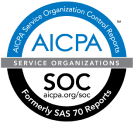Healthesystems’ VP of State & Industry Affairs comments on regulatory activity across the country
Federal Uncertainties Create Potential Impacts for Workers’ Comp
With a new administration in the White House, the nation is in a transition, creating uncertainty for business leaders, economists, and regulators. Recent months have seen more turbulence than previous transitions, with numerous Executive Orders and shifts in government oversight, foreign policy, and trade agreements.
And while the workers’ comp marketplace remains business as usual from a legislative and regulatory perspective, many executives have expressed concerns and consternation around the potential short-and-long-term impacts of recent Executive Orders, Cabinet appointments, and government directives.
Understanding the flurry of activity coming out of Washington D.C. requires a heightened level of awareness and critical thinking, as the speed of change and trajectory of those changes could have a downstream impact on workers’ comp, with virtually no stakeholder left untouched. The labor market is certainly impacted and therefore the changes will impact insurers, employers, medical providers, and others who provide services that support injured workers.
Reductions in the Federal Workforce
The directive to reduce federal bureaucracy has taken hold in the last few weeks, with reportedly hundreds of thousands of layoffs and voluntary resignations as a result of the Presidential Executive Order in February.
This, in combination with the federal hiring freeze which went into effect on January 20th, 2025 remains in effect through late April. The Order also requires the Office of Personnel Management to produce a report outlining its plan to reduce government employee headcount though operational efficiency and attrition. These actions extended to all federal agencies and are a few that provide support to or help inform workers’ compensation regulation, policy or heath care. Some examples are as follows.
Centers for Medicare & Medicaid Services (CMS)
CMS is one of the sub-entities of Health and Human Services, where approximately 80,000 employees have been offered buyouts. While CMS is not directly connected to workers’ comp programs, it is a major supplier of reimbursement benchmark data, adjudication and coding rules, as well as coverage determinations, many of which are directly used or referenced within workers’ comp systems.
The Senate Appropriations Committee recently cited concerns about the impact layoffs will have on the administration of Medicare programs, including research which takes place at the National Institutes of Health clinical centers.
Food and Drug Administration (FDA)
As a sub-entity of the Department of Health and Human Services, FDA leadership is tasked with reducing headcount within similar parameters as other agencies. There is one notable exception which may provide some comfort to interested stakeholders; product reviewers and inspection staff who oversee or are directly engaged with drug approvals and new medical device testing are specifically excluded from buyout programs.
This will prevent any delays or disruption to existing timelines for FDA approvals for some, but not all heath products. Some are concerned about how digital therapeutics, surgical robotics, and even AI software that is intended to augment medical care may experience delayed progress due to staffing shortages.
National Institute of Occupational Safety and Health (NIOSH)
As a sub entity of the Centers for Disease Control and Prevention (CDC), this agency conducts research and collects data on work injury prevention. Many employees were terminated from the CDC and NIOSH, including researchers at the CDC’s Mining Safety Program, a group that studies the impacts of respiratory hazards which can lead to occupational diseases like Black Lung and Silicosis.
Furthermore, a number of workers in the Public Health Associate Program (PHAP) were also terminated. PHAP is a two-year, paid training program which helps recent college graduates prepare for jobs in the field of public health. Soon after these terminations, the administration rescinded about a third of the terminated employees in response to concerns about these agencies’ abilities to fulfill their mission.






